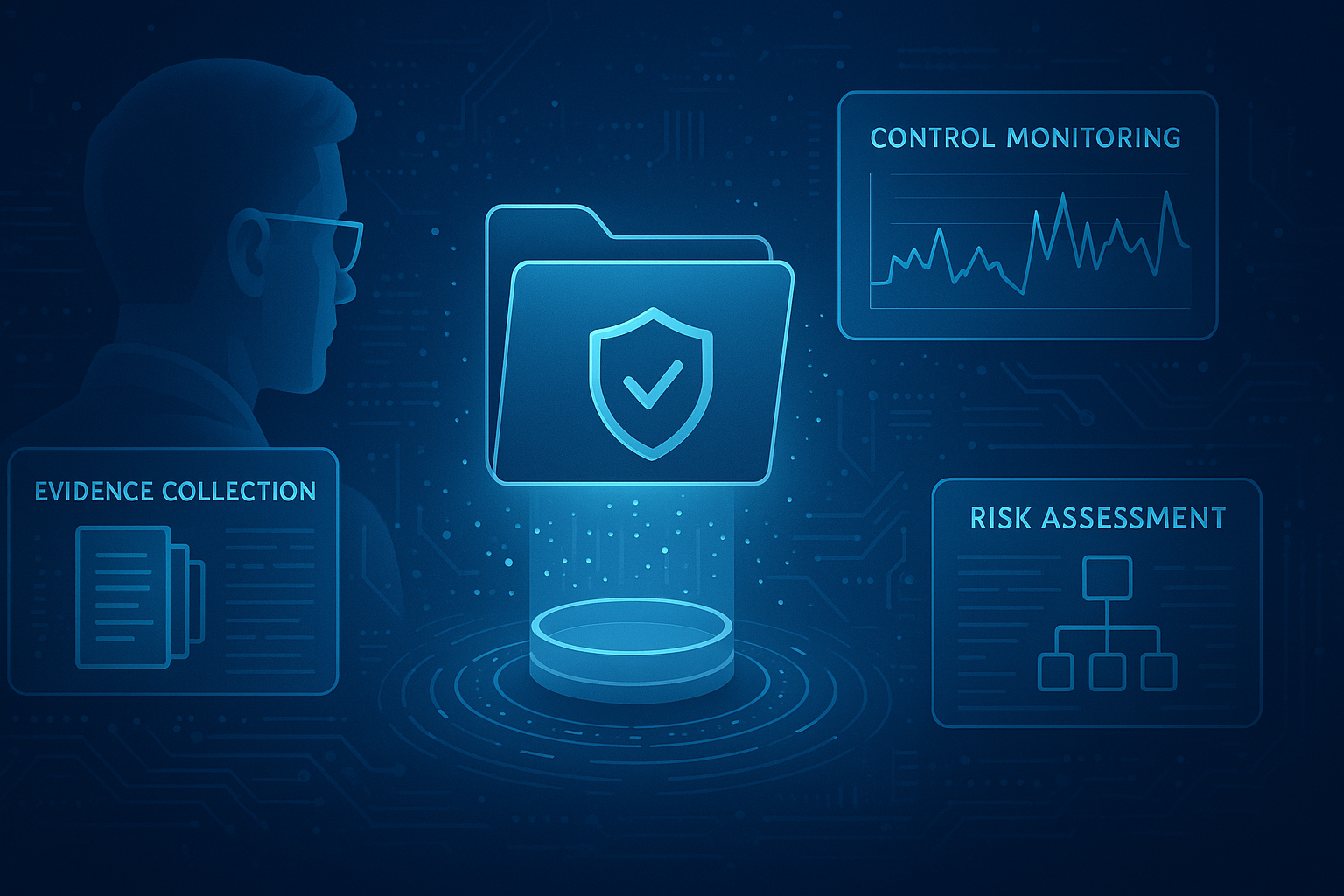In today’s business climate, digital transformation efforts are becoming increasingly prioritized. As a result, we are seeing information security officers being consulted in more c-suite meetings and being asked to report in greater detail to the Board on the security posture of the organization. Yet, the static reporting that CISO’s and their lieutenants have used in the past to report on cybersecurity metrics from spreadsheets and modular GRC tools are proving ineffective for these new requirements. In the past, when cybersecurity reporting was an annual event and the questions from the C-suite and Board members started and stopped at “are we secure?”, the amount of manual effort necessary to create reports and visualizations from those legacy tools was acceptable. Yet, in today’s landscape where reporting is more regular and requires the most up-to-date information static reports and visualizations that take weeks to aggregate and create are no longer sufficient for security operations.
The Board Is Getting Smart On Cyber
With the correlation between cybersecurity posture and business growth becoming ever apparent, Boards of Directors are increasingly focusing on cybersecurity metrics - with over 40% of Boards having a director with cyber expertise (Gartner). In order to make the necessary strategic decisions, Boards are recognizing that security metrics are critical. In these cases, as close to real-time data as possible is critical. Assessments conducted on spreadsheets or static GRC tools leave executive management in the dark as that data is outdated almost as soon as the assessment is complete. Information security KPI dashboards are critical to reporting security posture to the Board effectively and aligning program performance with business growth and strategy.
The Demand for Contextual Data Visualizations
With an increase in demand for cybersecurity program data, information security leaders must be prepared to move seamlessly between high-level overviews and more granular KPIs. This ability to move through program data without an audience having to sift through a comprehensive report is critical - whether reporting to the Board, C-suite, or more technical leadership, CISOs must be prepared for more in-depth questions and have the data to support it.
Security leaders today are expected to deliver key performance metrics to a wider range of audiences - from technical leaders to business leaders and the Board. With that comes the need to illustrate cybersecurity program data in a way that is usable and easy to understand by each of these audiences. Security teams were once able to generate static reports when the reporting audience was limited and those presentations were confined to an annual basis, no longer. Today, security leaders and their teams need the ability to generate reports and visualizations for audiences on the fly to fit the necessary contexts. Automated dashboards such as cybersecurity KPI dashboards that leverage integrated cybersecurity program data across all facets - audit, IT risk, third party risk management, compliance, and governance - are the only way for security leaders to meet these emerging needs.
IRM Makes Dynamic Cybersecurity Dashboards Possible
The fundamental shortcoming of modular GRC tools and spreadsheets when reporting cybersecurity KPIs is the siloing of information across functions. The way GRC products were built and iterated on over the years has left them unable to deliver on these new, just-in-time reporting needs of today’s information security leadership.
By taking an integrated risk management approach to cybersecurity program management, leaders can see program data from a single pane of glass without the need to assemble program data across teams. Without a centralized location for cybersecurity program data, security teams are left assembling and reassembling data to generate visualizations across a wider range of contexts.
Gartner predicts that by 2022, 50% of large, publicly traded companies will have Board committees dedicated to integrated cyber risk management. As the security incidents of Marriott and Equifax have proven, consumers are becoming more technologically literate and are gaining a greater understanding of the impact of data breaches and are demanding more security from the companies they buy from. While Gartner recommends delivering integrated risk management reports at every Board meeting - the ability to deliver those reports from modular GRC and spreadsheets at that cadence is almost impossible. Combining the manual effort necessary to conduct assessments out of those tools with the need to aggregate and visualize the assessment data, information security teams can quickly find themselves trapped in an endless loop. Rather, a solution that integrates and acts as a single source of truth for cybersecurity program data enables teams to complete assessments faster while also automating much of the reporting process. Building on those abilities, CyberStrong’s data visualizations with Governance and Management Dashboards with Drill Downs enable cybersecurity leadership to present their information security KPIs at ranging levels of detail for various audiences from a single place.





.png)
.png)
.png)
%201.png)
.png)




